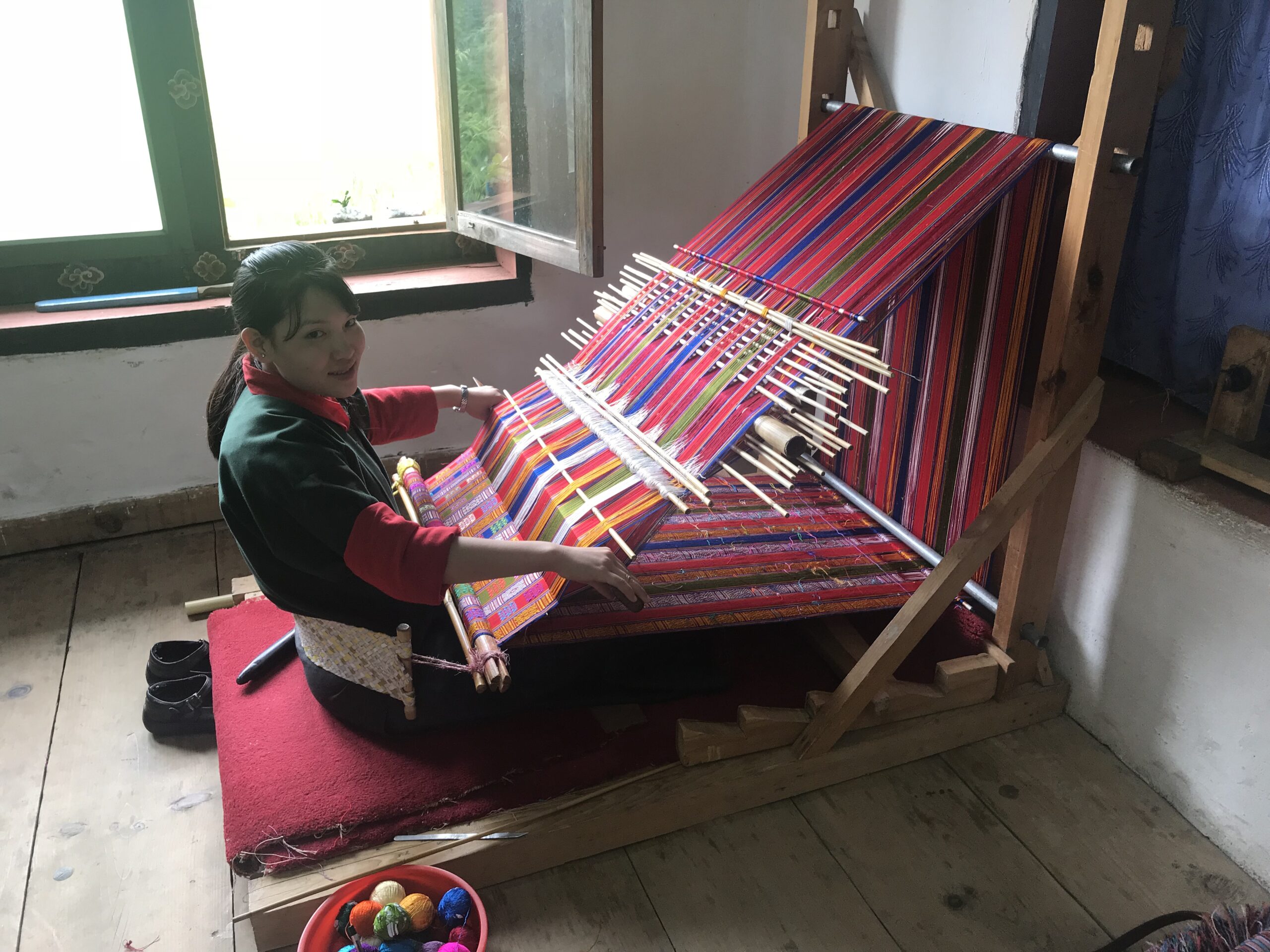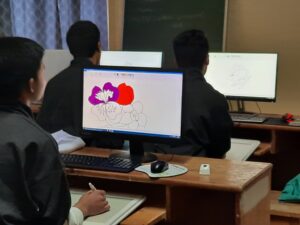


Thagzo, the art of weaving, is an essential part of Bhutan’s cultural heritage and one of the Zorig Chusum (13 traditional arts and crafts). Thagzo showcases the vibrant colors, sophisticated patterns and intricate dyes of Bhutan using age-old weaving techniques which have been passed down through the generations and closely tied with the rich history of Bhutan.
In Choki Traditional Arts School, Thagzo students are taught how to do weave kiras, scarves, table mats and intricate traditional patterns. The difficulty of the patterns increases as the students get promoted to the next level.

Thagzo Level One students are taught the basics of preparing threads for dyeing, weaving, plain jangtha (loom woven cloth) and simple designs for weaving half kiras such as jadrima, mathra, serthra, thangra, hor kam sum and adang mathra. They are also taught how to weave table mats with traditional designs like pelyab meto and hor (simple). They are encouraged to get familiar and use different types of traditional threads such as therma, telinkotra, sherkoep and bura.
Thagzo Level Two students are taught how to weave kabneys (fringed scarves used to carry infants) and kayraa (belt like cloth piece used in tying around the waist). The students also move on to learn to weave complicated designs such as, meto chem, moenthra, hor kam duenpa and pelsar. They use different types of conventional threads such as therma, telinkotra, sherkoep and bura.
Thagzo Level Three students are taught to weave symbolic patterns like jola meto (yurung and dorji) and weave half kiras with high difficulty level designs such as tigma meto, hor kam ngam, mentshi mathra, hor kam ghum, and hor kam chugchim. They use different types of conventional threads such as therma, telinkotra, sherkoep and bura to preserve the traditional texture and methods.

Thagzo students are required to complete six-ten weeks of On the Job Training (OJT), a period of internship that offers students practical experience.
In order to get promoted to next level, students are assessed on a monthly basis and have to clear the exam. Students are expected to take exams twice a year, in July and in December. By the end of the year, the students are expected to draw rimo accurately from memory, make their own blue print designs, understand the sequence of painting and paint as per the requirements.
By the end of the year, the students are expected to weave any kind of meto kira and should be able to design their own. The students are assessed on monthly basis and have to clear the exam to get the graduation certificate.

Students learn basic computer skills such as typing, creating slides, using the internet as a resource and basic graphic design. The program was introduced in 2012 with the objective to provide basic IT knowledge.

Students learn simple Dzongkha with the basic skills of reading and writing in Dzongkha. Since Dzongkha is a key aspect of our culture, students are taught Dzongkha to enrich their craft and learning experience.

Students learn simple English with the basic skills of reading, writing, listening and speaking in English. They learn to comprehend simple texts and hold conversations in english.

Students learn simple math skills like adding, subtracting, multiplying and dividing numbers to solve problems. They also learn basic formulas and equations.

© Choki Traditional Art School. All rights reserved 2021